This fermented mango habanero hot sauce is a wonderful spin on the traditional hot sauce. It is sweet, very spicy, and savory. The recipe is pretty straightforward and a great way to learn about fermentation. This sauce can be enjoyed with tacos, burritos, rice dishes, grilled meats, chips, or any time you want to add a sweet and spicy kick to your meal.
Also, try my Fermented Pineapple Jalapeno Hot Sauce and Passion Fruit Hot Sauce.

Table of Contents
A Note on Fermented Hot Sauce
Fermented hot sauce usually involves a fermentation step where the chili peppers (and other ingredients) are submerged in a saltwater brine for a period of time before being processed into the sauce. This changes the flavor profile of the peppers making them more complex.

This recipe is based on my standard Fermented Hot Sauce recipe, with some modifications to account for the fruit. If you are interested in learning more about fermentation and its benefits, I encourage you to check out my Lacto-Fermentation primer.
You can also find more spicy Fermentation Recipes like my Sambal Oelek (Indonesian Chile Paste) and Shattah (Middle Eastern Chile Paste).
Ingredients
This mango habanero sauce recipe is straightforward and uses standard pantry and fridge ingredients. I recommend choosing the freshest possible produce, and organic is always best when fermenting.

- Fruit: This recipe uses fresh, sweet mango. If you want to try another fruit, you can use another tropical fruit like pineapple or even passion fruit. Make sure to also try my Fermented Pineapple Jalapeno Hot Sauce and Passion Fruit Hot Sauce.
- Peppers: Habanero peppers are very spicy! I don’t recommend using more than a couple. And you may even want to remove the seeds and ribs! Balance them out by adding sweet bell pepper. Use yellow or orange bell pepper to complement the color of the habanero and mango.
- Seasonings: Ground cumin and ground coriander round out the flavor of this sauce. You can use more or less, or none at all. You can use other Caribbean spices like Allspice and nutmeg to add warmth.
- Acid: I like adding both lime juice and white wine vinegar to this recipe once the fermentation step is complete. The acid helps with flavor and preserves the color and freshness of the sauce.
See the recipe card for full information on ingredients and quantities.
How to Make Fermented Mango Habanero Hot Sauce

1. Make Brine. In a measuring cup, combine the water and kosher salt, pickling salt, or sea salt. Wisk to combine. The salt should be completely dissolved (Image 1).
2. Pack jar. Add the garlic and the white onion to the bottom of a mason jar. Carefully pack the fresh mango, habanero and bell peppers into the jar, pressing down firmly as you fill it (Image 2).
3. Weigh down. Apply fermenting weight, if using (Image 3).

4. Add Brine. Pour the salt brine into the mason jar and cover the peppers. Tap the jar a few times to release any air bubbles. Discard any leftover brine (Image 4).
5. Ferment. Apply the fermenting lid (Image 5). Ferment on the counter for 3–5 days (Image 6). The longer you ferment, the tangier the sauce will be. The brine may get cloudy, and that’s completely normal.

6. Strain. Strain the contents of the mason jar, reserving the brine (Image 7).
7. Blend. Transfer the peppers, mango, onion and garlic to a blender and add the lime juice, vinegar, cumin and coriander (Image 8). Blend until smooth (or your desired consistency is reached). You can add a splash of the brine to help loosen the sauce if needed (Image 9).
8. Bottle. Transfer the sauce to a squeeze bottle or glass jar (Image 10). Refrigerate.
Equipment and Supplies
A fermentation lid (also known as an airlock) is not essential, but highly recommended. This is a lid with a valve that allows gasses to escape safely. It fits directly onto your jar. There are several options like the Klemon and Masontops (affiliate links).
You can use a standard lid and unscrew it once or twice a day to let any built-up air escape and quickly reseal. This option is not ideal as it can allow oxygen back in.
Glass fermentation weights (affiliate link). These are versatile and help keep the peppers submerged in the brine.

Expert Tips
- Wear gloves! Handling hot chile peppers and then touching your face or other part of your body is asking for trouble! When preparing the hot peppers (like in my Fermented Jalapenos recipe), use latex or nitrile gloves to protect yourself.
- Use glass jars only during the fermentation process. Avoid using any plastic or metal containers as those may react with the acid in this recipe. Glass mason jars are ideal.
- Keep it clean. Sterilize your jars and utensils before using them to prevent unwanted bacterial growth. You can sterilize jars and tools by washing them in hot soapy water and then boiling them for 5 minutes.
- Safety first. Make sure to refrigerate your final product in the fridge. Don’t leave it out on the counter.
- When you make homemade hot sauce, it will separate in the fridge (the solids will sink and the liquids will rise to the top of the bottle or jar). This isn’t a big deal, you can just shake the sauce before using it to reincorporate everything. You can use a small amount of xanthan gum in the blending process to help keep the sauce homogeneous. For a homemade hot sauce recipe, I wouldn’t bother adding stabilizers.
- A cloudy brine in fermentation is common and usually not a cause for concern. It could be due to yeast or microbial activity, or simply starches and proteins from the breaking down of the fruits and vegetables. Always trust your senses; if something looks or smells off, it’s best to err on the side of caution and discard the ferment. When in doubt, throw it out.
Recipe FAQs
Yes, but it won’t have the same depth of flavor. Simply blend the mango, habanero, bell pepper, onion, garlic, spices, vinegar and lime juice. You will need to season the sauce with salt and may need to add water to reach your desired consistency.
During the fermentation process, store the jar at room temperature on a counter away from direct sunlight. Once the sauce is finished and blended, it must be stored in the fridge.
As this recipe includes fruit, I recommend using the sauce within 2-3 weeks.
I do not recommend freezing this sauce. It will change the flavor and consistency. However if you made a large batch, you can freeze it in small deli containers. Use it within 6 months.
Other Hot Sauce Recipes
If you make this Fermented Mango Habanero Hot Sauce or any other fermentation recipe on Urban Farm and Kitchen, please take a moment to rate the recipe and leave a comment below. It’s such a help to others who want to try the recipe.
For more Urban Farm and Kitchen, follow along on Instagram, Facebook, and Pinterest, visit the Urban Farm Shop, or subscribe for new posts via email.
Fermented Mango Habanero Hot Sauce
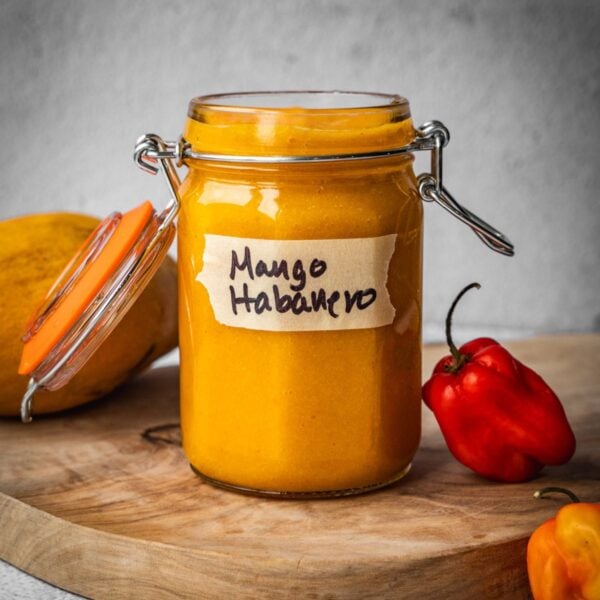
Equipment
- ¾ quart mason jar (24 fl oz mason jar)
- Fermentation weight – Optional but recommended
- Fermentation lid or airlock – Optional but recommended
Ingredients
Brine
- 2 cups Unchlorinated water – Bottled, spring or filtered water is fine (473ml)
- 1 tbsp Kosher salt, sea salt or pickling salt – 17 grams
Fermentation Ingredients
- 2-3 Garlic cloves
- ½ White onion
- 1 cup Fresh mango – Chopped into chunks
- 1 Yellow or orange bell pepper – Seeded and cut into chunks
- 1-2 Fresh Habanero peppers – Chopped into chunks
Seasoning (after fermentation)
- 2 tbsp White vinegar
- 1 tbsp Lime juice
- ½ tsp Ground cumin
- ½ tsp Ground coriander
Instructions
- Make Brine. In a measuring cup, combine the water and kosher salt, pickling salt, or sea salt. Wisk to combine. The salt should be completely dissolved.
- Pack jar. Add the garlic and the white onion half to the bottom of a mason jar. Carefully pack the fresh mango, sweet peppers and habanero peppers into the jar, pressing down firmly as you fill it.
- Weigh down. Apply fermenting weight, if using. See Note.
- Add Brine. Pour the salt brine into the mason jar and cover everything. Tap the jar a few times to release any air bubbles. Discard any leftover brine.
- Ferment. Apply the fermenting lid. Ferment on the counter for 3–5 days. The longer you ferment, the tangier the sauce will be. The brine may get cloudy, and that’s completely normal.
- Strain. Strain the contents of the mason jar, reserving the brine.
- Blend. Transfer the peppers, mango, onion and garlic to a blender and add the vinegar, lime juice, cumin and coriander. Blend until smooth (or your desired consistency is reached). You can add a splash of the brine to help loosen the sauce if needed.
- Bottle. Transfer the sauce to a squeeze bottle or glass jar. Refrigerate and use within 2-3 weeks.
Notes
- Fruit: This recipe uses fresh, sweet mango.
- Peppers: Habanero peppers are very spicy! I don’t recommend using more than a couple. Balance them out by adding sweet bell pepper. Use yellow or orange bell pepper to complement the color of the habanero and mango.
- Seasonings: Ground cumin and ground coriander round out the flavor of this sauce. You can use more or less, or none at all.
- Acid: I like adding both lime juice and white wine vinegar to this recipe once the fermentation step is complete. It helps round out the flavor and preserve the color and freshness of the sauce.
- Wear gloves! Handling hot peppers and then touching your face or other part of your body is asking for trouble! When preparing the hot peppers, use latex or nitrile gloves to protect yourself.
- Keep it clean. Sterilize your jars and utensils before using them to prevent unwanted bacterial growth. You can sterilize jars and tools by washing them in hot soapy water and then boiling them for 5 minutes.
- Safety first. Make sure to refrigerate your final finished hot sauce in the fridge. Don’t leave it out on the counter after you fermented and blended it.
Nutrition
Nutrition information is automatically calculated, so should only be used as an approximation.
 Like this recipe? Rate & comment below!
Like this recipe? Rate & comment below!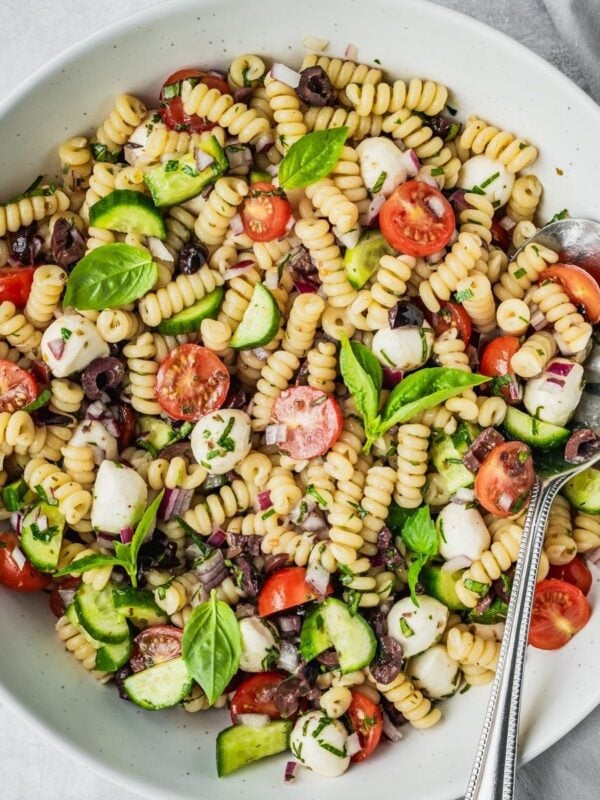
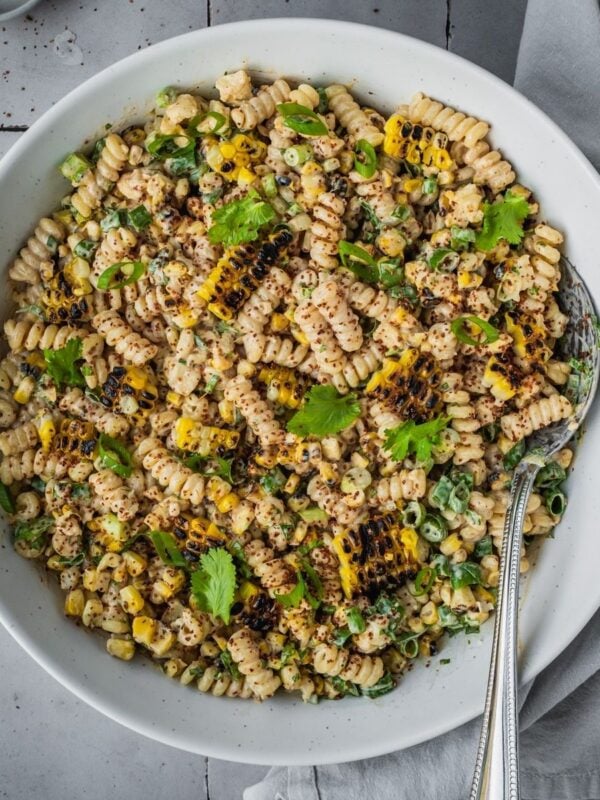



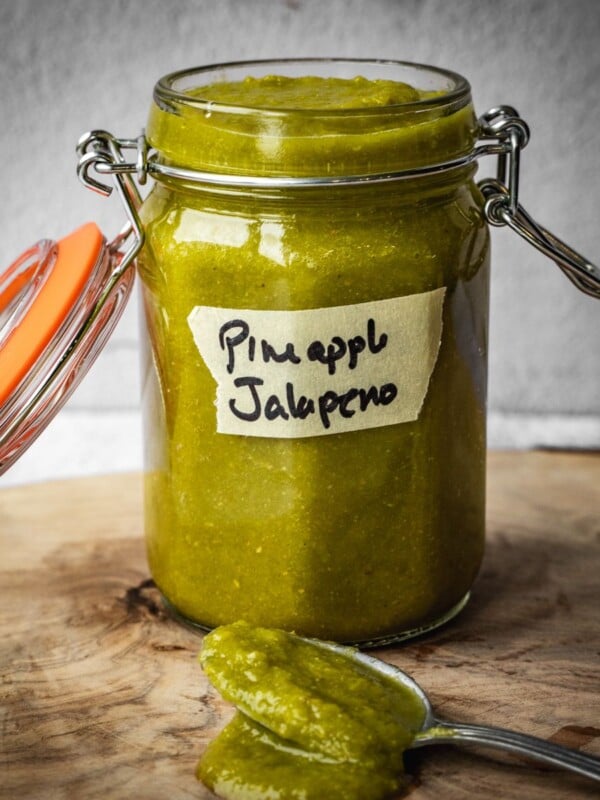
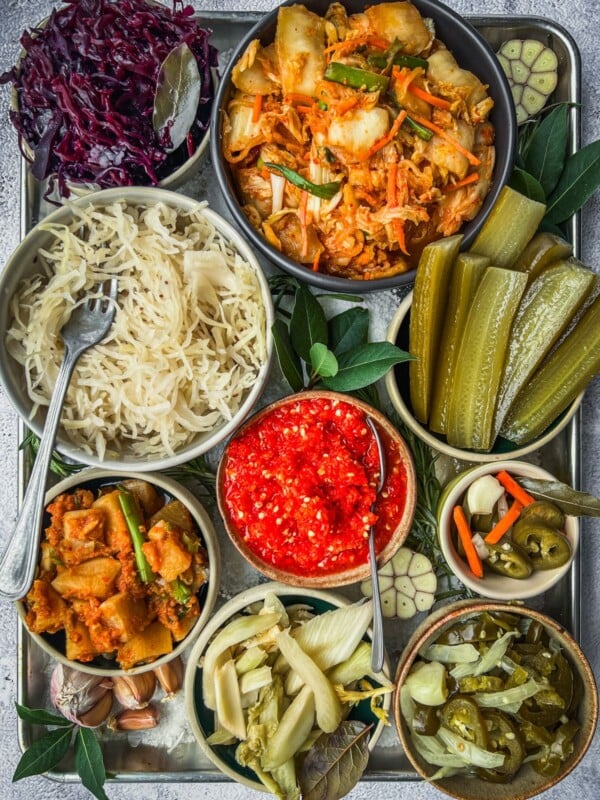









I see the recipe calls for 3-5 days fermentation…most recipes to date that I have worked say one can ferment up to 3 weeks or more…why such a short time? And certainly it must last longer than 3 weeks in the fridge? Just curious 😉
This recipe uses the fermentation step more as a flavor enhancer rather than a true long fermentation. The addition of the acid at the end also affects the ferment, hence why I specify a use by date. The shorter fermentation period is more in line with beginners, who don’t always know the signs of a ferment that has gone off. But if you are an expert in fermentation, feel free to ferment on the counter for longer. And if you omit the lime juice and vinegar, it will keep longer in the fridge.
Hi, I just made the pineapple jalepeno hot sauce
I’m getting ready to now do the mango Habanero
Can I use some of the brine from the first hot sauce or use the saltwater brine again?
It is best to make a fresh batch of saltwater brine.
Looking to make this, but where does the consumption time of 2 to 3 weeks come from? Normally a fermented sauce like this should be able to last indefinitely. Just wondering, since using that amount of sauce over that amount of time could be hard.
If stored properly, fermented foods can last a long time. But there are many factors at play that can determine longevity. Proper storage, be careful about cross contamination, etc. So if you store it correctly, use clean utensils, etc it can last much longer.